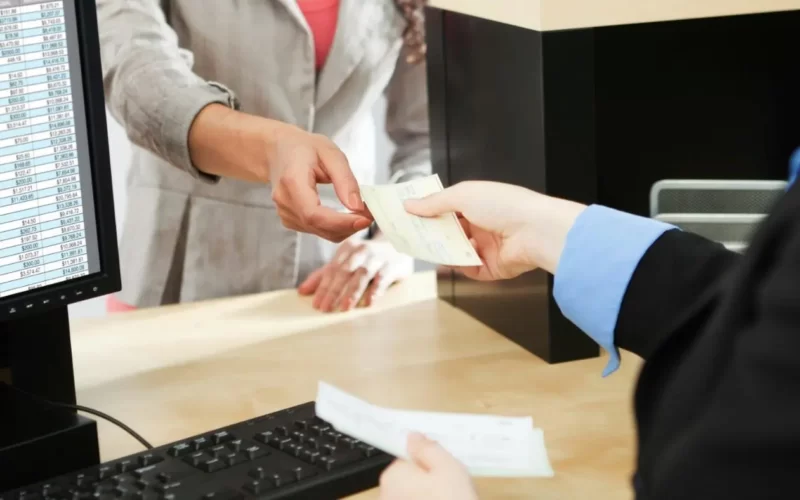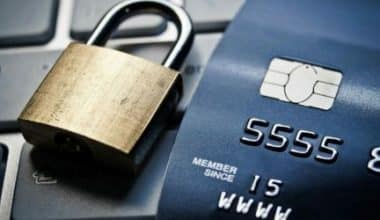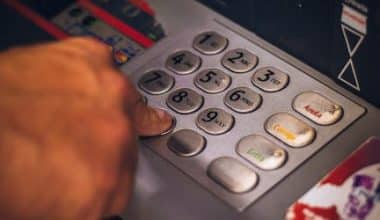There’s no doubt that getting paid is crucial, whether you’re a worker, an independent consultant, or something in between. However, there are various ways of making or receiving your money. But when it comes to getting your compensation for your work and effort, the sooner you get your money, the better. Even yet, driving to the bank each and every time you receive a payment to deposit a check can be inconvenient. Hence, a direct deposit may be a good option if you’re seeking a far more convenient manner to get your money. A secure and simple way to deposit your paychecks directly into your checking or savings account, as well as tax refunds, stimulus checks, and certain federal subsidies. Nevertheless, many people are still unsure how long it takes to process or receive a direct deposit for the first time, or perhaps for a tax refund.
Well, now you’re curious, so keep reading to figure out how long a direct deposit takes as well as how to set one up.
What is a Direct Deposit?
Direct deposit is the automatic electronic transfer of money into a bank account that replaces the need to write a cheque. In other words, it is a fully automated payment method in which funds are deposited electronically to your bank or savings account. This, however, allows the payee to get their payment more quickly and avoid dealing with paper checks, as well as avoiding a trip to the bank.
In addition, it is a secure method of receiving your income and other benefits. Your account balance is automatically updated when you receive funds this way. Nonetheless, according to the American Payroll Association, approximately 94 percent of American workers receive their pay via direct deposit from their employers.
Understanding the Direct Deposit Process
A direct deposit is an electronic financial transfer that you make directly into your bank or savings account. Although it works similarly to a regular check deposit, nevertheless, it is without the added step of receiving the check. Likewise, it is more convenient, time-saving, and secure compared to paper checks because the transaction takes place entirely online.
Generally, the direct deposit process implies that you will receive your paychecks into your bank account automatically. In most cases, you will have to set up this form of direct deposit with your company. It is also an option for tax refunds and perhaps other forms of payment.
In addition, this deposit option has the advantage of allowing funds to flow smoothly from the payer to the payee. Employees can bet on their paychecks coming on payday without needing to take an additional step using direct deposit. Employers can also save money by not printing and distributing paper checks on a weekly or biweekly basis.
On the other hand, you can also make payments via direct deposit. Accordingly, you can utilize it to pay rent or energy bills, make monthly mortgage repayments, settle insurance costs, or pay a tax due provided the other party allows an electronic money transfer.
On the contrary, banks now provide bonuses for opening a new direct deposit accounts. And if you decide to link it to a savings account, the bonus could be a one-time cash deposit of just a few hundred bucks or a rate of interest.
How Does Direct Deposit Work?
One of the best aspects of direct deposits is that they are completely automated. Your account balance automatically increases anytime you get a payment via direct deposit, so you can use this money straight immediately.
Basically, there won’t be any need to accept the payment or deposit the funds into your account, just like you would have done had you been given cash or a check.
Direct deposit is a common, simple, efficient, and easy method of payment. However, you might be puzzled about how this all works. To begin making deposits via direct deposit, employers will need the payee’s bank account details or a void check. While direct deposit is most generally used to send an employee’s paycheck, it can also be used for tax refunds, investment profits, retirement account payments, and government benefits such as Social Security as well as unemployment benefits.
Furthermore, the company will usually transmit its payroll instructions to its financial institution 1 or 2 business days ahead of time, which will subsequently forward the info to the Automated Clearing House (ACH). The ACH organizes the transactions and guarantees that each instruction is sent to the appropriate bank account for every worker’s paycheck. Your employer will then transfer your salary to your bank ahead of payday. Once the employee’s banks receive the ACH instructions, they execute the payment and deposit or credit your accounts with the relevant funds.
Guide to Setting up Direct Deposit
You may be able to get your business or organization up and running with direct deposit reasonably quickly with a little documentation and a payroll plan. Nevertheless, the following are the basic steps to set up one:
#1. Select a Direct Deposit Service Provider.
Employers can engage with the bank that manages their business account or with a payroll service provider that offers direct deposit.
#2. Complete the Documentation for Activation.
Employers will typically need to sign the ACH terms and conditions as well as present recent financial documents. This particularly is to demonstrate their ability to cover the transactions. If they haven’t previously, businesses working with a payroll provider may be required to provide information about their organization as well as banking information.
#3. Collect Employees Data
The necessary information must be provided by each employee. This may include:
- Name of financial institution
- Type of account
- Account number, and
- Routing number.
However, before companies can switch employees to direct deposit, some states require such employees to sign an agreement.
#4. Upload Employee Information
Although employees may be able to enter their bank information individually. This, nevertheless, is if the payroll provider offers self-service. Instead, the employer will be accountable for providing the appropriate information to the financial institution. Regardless, exporting a National Automated Clearinghouse Association (NACHA) file is a standard technique to do this quickly.
#5. Sync Direct Deposit and Pay Period
Generally, when it comes to direct deposit, several financial institutions and payroll providers need payroll to be processed days before payday. Employers who have already started paying employees should check to see if their direct deposit timetable will function properly with their current payroll calendar or establish a new version.
#6. Payroll Processing
Upon processing payroll, employees will automatically receive their salaries in their bank accounts as long as everything is in order. Others who don’t enroll in direct deposit, on the other hand, will have to get their payment through a printed paycheck or another manner.
How Long Does Direct Deposit Take?
A direct deposit’s principal advantage is how much time it can save you. Nevertheless, the time or how long it will take before the money reaches your account depends according to where it comes from. Meanwhile, when starting a new job, it is critical to be aware that it may take up to two pay cycles long to set up direct deposit properly and for the first time. As a result, you’ll have to rely on physical checks for a time until everything is in place.
Okay, now that you have your direct deposit process set up, you may be wondering how long it takes for your direct deposit to take effect. Generally, the exact time your money arrives depends on the business you’re working for. And also factors such as your employer’s payroll program and when they submit the payroll. This nevertheless, is crucial to grasp, especially if you’re planning to set up automatic transfers.
Typically, direct deposit will take one to three business days longer to process on average. Although this deposit process is quick, the timeframe or how long it will take for the funds to get in your account is dependent on the exact time the issuer or payer initiates the payment. However, there are several other causes that can create slowdowns.
Let’s assume a business or an organization employs payroll software. And they do this to ensure that employees receive their payments conveniently and on time. You should expect your paycheck to be in your bank account at midnight the day prior to your payment date. This, however, is only if your employer processes and deposits it. Meanwhile, you can start using the money as soon as it hits your bank account because this approach never keeps funds.
How Long Does Direct Deposit Take for Tax Refund?
Generally, the fastest approach to earn your refund is to e-file your return and choose direct deposit as your method of payment. Nevertheless, how and when you file your tax return will determine how long it will take for you to receive your refund using the direct deposit process. Meanwhile, the IRS has stated that the vast majority of e-filers, those that also use direct deposit will get their refund in under 21 days for the 2023 tax year.
On the other hand, filing a paper refund or getting your refund using a paper check can cause processes to take months to complete. During the start and the conclusion of the tax season, the IRS also processes applications more slowly. That’s because that’s when the majority of taxpayers file their returns.
In addition, E-filing your return and receiving your tax refund via direct deposit is the quickest alternative. The 95% of taxpayers who chose this route will receive their refunds within 21 days for their 2021 taxes. One which they will receive in 2023. This, however, implies your refund will arrive in your account three weeks after the IRS approves your refund. After that, it could take a couple of days for your financial institution to make available the funding to you.
If you’re still not sure about how long it could take your 2023 tax refund to arrive if you use the direct deposit option, here’s the delivery time as provided by the Federal tax.
| Delivery type | Delivery time (date 0f filing – when to get a refund) |
| E-file with direct deposit | 1-3 weeks |
| Paper file with direct deposit | 1-3 weeks |
| E-file with a refund check in the mail | 6-8 weeks |
| Paper file with a refund check in the mail | 6-8 weeks |
How Long Does Direct Deposit Take the First Time
Normally, for the first time, it will only take a few minutes long to sign up for a direct deposit. However, because the payor must validate your banking information, it may take a few weeks or even longer to take effect.
So how long will direct deposit take to activate the first time you use it? Typically, it may take one or two pay cycles to become activated with your company. However, since it’s going to take this long as a first-timer, you may alternatively get a physical check instead of a direct deposit as payment during that time.
In some circumstances, an employer will engage a new employee at the beginning of the pay cycle. This, however, is for the direct deposit authorization process doesn’t take a long time to complete for the new worker to get his or her first payment.
One of the most significant advantages of direct deposit is that it occurs promptly. Typically within one to three business days, but sometimes up to five. This changes depending on who is receiving the payments, and it may even improve in the future.
You can normally use the money as quickly as humanly possible in your account when it comes from your company. In other situations, the payment may reach your bank, Yes. But, it must be processed by the bank before it can be spent. It could take longer, up to five business days for your deposit to happen in this case.
How Long Does Direct Deposit Take to Process?
Saying how long it will take for the direct deposit process to go into effect depends on how quickly your employer processes your first request, which could take a few weeks.
It is a method of electronically transferring funds from one bank account to another. Meanwhile, this can be accomplished by an ACH transfer, a sort of electronic payment transfer.
An ACH transfer is an electronic money transfer between financial institutions and customers. People no longer require paper cheques or cash with ACH transactions. And because they’re electronic, they may happen nearly instantly. As such, you don’t have to worry about stuff like verifying the legitimacy of a paycheck.
Many employees should expect their employer to process their direct deposit not to taking too long. Typically it should arrive in their account at midnight of the day before their payment day. Meanwhile, you might have your money prior to even getting to work on payday. This is absolutely accurate regardless of if you are not around or probably unavailable to work on payday. Why? Because it is automated and does not require your input.
In addition, payments from the federal government are similarly structured so that recipients are aware of how long it will take to process as well as when they will get their funds.
Conclusion
Setting up a direct deposit is simple and convenient when it comes to making deposits. With this option, you’ll be able to see your money go through to your bank account in a short timeframe.
Basically, direct deposit is a method of electronically transferring funds from one person to another. It eliminates the necessity for the receiver to take personal cheques to the bank and also allows them to get their monies within the interval of one to three days. Likewise, direct deposit offers the fastest way for taxpayers to receive their tax refund.
Employers, employees, as well as government agencies all, benefit from direct deposit since it is both cost-effective and efficient. Paper checks are almost outdated, thanks to the numerous advantages of direct deposit.
FAQs
Is Direct Deposit secure?
Direct deposit is significantly more secure than a paper check as a means of payment. It reduces the risk of check fraud and checks loss or theft.
Is Automated Deposit an instant Transaction?
Although this type of deposit is almost quick, you may not have immediate access to the funds. You can usually withdraw the money the same day it arrives in your account, but you may have to wait until the next business day in some situations.
Is it Convenient to Make Automated Deposits?
When you receive funds via this option, they are automatically deposited into your account without any effort on your side. Your account will be credited regardless of whether you are out of town or too busy to go to the bank.
Is Direct Deposit Worth it ?
Basically, going digital saves time and money. You don’t have to print cheques or pay to ship them with electronic payments. This saves the company money while also conserving the resources used to print and deliver checks. Receiving payments is usually free while transferring funds using ACH is perhaps more inexpensive than other choices.






